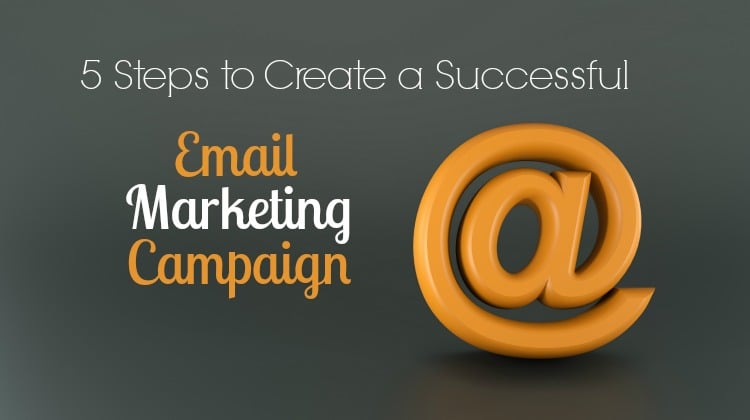
Email marketing works, but you can’t start collecting email addresses and sending mass email messages with the expectation that you’ll suddenly see a huge jump in sales. It’s far more likely that those messages will be ignored or deleted.
Why? Because you failed to follow the five essential steps to creating a successful email marketing campaign.
For every email marketing campaign you develop, follow the five steps introduced below. Don’t skip a step (or multiple steps). Your campaign results will suffer for it. That means the money and time you invested into creating the campaign will be at least partially wasted. But if you follow these five steps, your email marketing campaigns should deliver better results than ever!
1. Target
Is everyone on your email marketing list the same? Do they all buy products or services like yours for the same reasons? Do they all share the same problems?
Here’s a hint—the answer to all three of those questions should be no.
For your email marketing campaigns to be as successful as possible, you need to segment your audience and send laser-focused messages to highly targeted groups. Build each campaign for a specific target audience.
2. Message
As mentioned in #1, your email marketing messages should be laser-focused. If you try to communicate too many things in one campaign, each message gets diluted.
Focus on a primary message that matches the target audience in content and in tone. You can add secondary messages, but keep it to no more than two.
3. Timing
Make sure you send your email campaigns when the receiving audience is most likely to see them. If you’re emailing a business-to-business audience and most of the email addresses on your list are work addresses, send your campaigns during normal working hours.
This is an area where testing is extremely important. It could take a few campaigns sent at different times and comparing open and click-through rates between all of the campaigns to find the best day of the week and time of day to send your campaigns in the future.
4. Action
Make it as easy as possible for recipients to know exactly what they should do after reading your message. Not only do you need to make sure they know what to do, but also, you need to make it incredibly easy for them to take that action.
There are a few things you should always do to make it easy for recipients to respond to your call to action. First, make it extremely easy to see. Second, make sure your messages are mobile-friendly so people can read and act using their smartphones and tablets. Third, make sure they can click a link to complete the desired action. You’re sending a digital communication, so the recipient should be able to act in response to that communication digitally. An email message that tells a customer to call you to complete an action is likely to drive worse results than one that provides a link which the recipient can click to complete the action.
5. Rules
There are laws and rules that you need to follow when you send email marketing campaigns. These rules govern requirements like who you can send to, how to give recipients the option to opt-out of receiving messages from you, how to identify yourself, and more. One of the key laws that sets regulations for email marketing is the CAN-SPAM Act, so be sure to familiarize yourself with it.
If you use an email marketing tool like ActiveCampaign, MailChimp, Constant Contact, ConvertKit, Infusionsoft, Aweber, and so on, then the provider might have additional rules you need to follow. Be sure to read those rules and stick to them or your account could be closed without notice!
Email marketing works, but you need to have a plan and follow the steps to get the best results! For more help, pick up a copy of my book, Ultimate Guide to Email Marketing.
Originally published 7/6/15. Updated 5/9/19.




